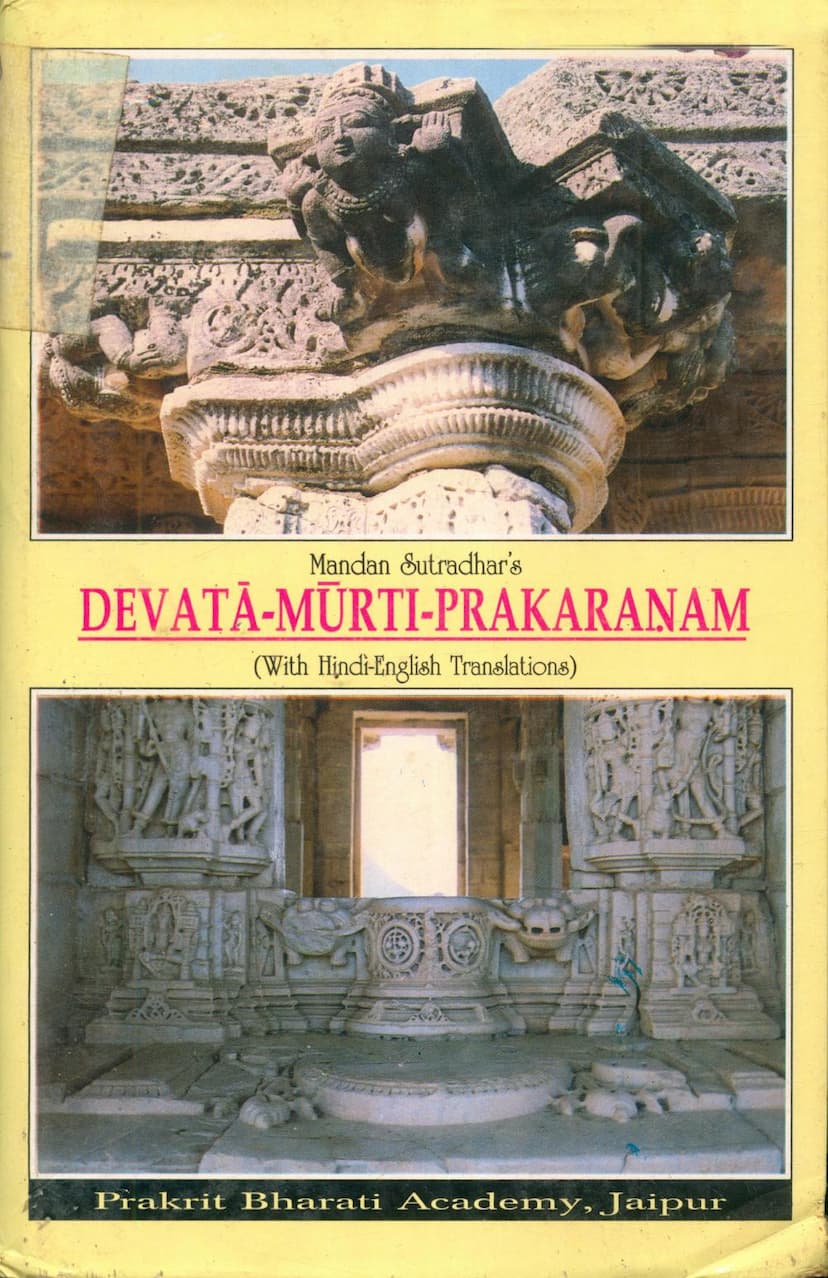Devta Murti Prakaran
Added to library: September 1, 2025

Summary
This document is a summary of the Jain text "Devta Murti Prakaranam" (also referred to as Mandan's Devata-Murti-Prakaranam) authored by Sutradhar Mandan. The book, published by Prakrit Bharati Academy, Jaipur, in 1999, provides detailed guidelines on Jain and Hindu iconography and temple architecture.
The text, originally in Sanskrit, has been translated into Hindi by Pandit Bhagwandas Jain and into English by Dr. Rima Hooja. M. Vinay Sagar served as the editor-in-chief and general editor.
Key Aspects of the Book:
- Historical Context: The book is presented as a significant contribution to the study of Jain iconography and temple architecture, fields that have seen a decline in active interest with the advent of modern science. The Prakrit Bharati Academy aims to bridge the gap between ancient and modern knowledge by bringing such technical texts to light.
- Author and Translator: Sutradhar Mandan was a renowned 15th-century architect and artisan from Mewar, known for his contributions to architecture and town-planning during the reign of Maharana Kumbha. Pandit Bhagwandas Jain, the Hindi translator, was a distinguished Jain scholar in architecture, painting, sculpture, and astrology. Dr. Rima Hooja, the English translator, is an established scholar in archaeology.
- Content Overview: The "Devata-Murti-Prakaranam" is an eight-chapter work that discusses various aspects of Hindu and Jain iconography and temple architecture.
- Chapters 1-3: These chapters lay down general rules for iconography, covering stone selection, statue proportions, auspicious and inauspicious placements and lines of vision, and the importance of conforming to established conventions. They also detail the consequences of creating disproportionate statues.
- Chapters 4-8: These chapters focus on the religious representation of specific deities. They detail the iconography of deities such as Surya, Brahma, the Navagrahas, Lokapalas (directional guardians), Vishnu (including his various emanations and incarnations), Shiva (including different forms of Sivalingas), the 24 Jain Tirthankaras and their attendant Yakshas and Yakshinis, and various forms of the Great Goddess (Shakti), along with Ganesh, Kartikeya, and dvarapalas (door guardians).
- "Sculptor's Handbook": The English translator, Dr. Rima Hooja, aptly summarizes the book's usefulness as a "sculptor's handbook," highlighting its practical value for artists and experts in the field.
- Scope and Significance: The text provides detailed directions for artists, from selecting working materials to fabricating and installing idols according to iconographic conventions and prescribed scales. It also offers insights into socio-economic conditions, religious beliefs, and the blending of cults prevalent in 15th-century Rajasthan. The book's detailed descriptions allow for comparisons and analysis of the changing importance of different deities over time.
- Jain Focus: Chapter 7 specifically details the iconography of the 24 Jain Tirthankaras and their attendant Yakshas and Yakshinis, demonstrating the text's relevance to Jain tradition.
- Illustrations: The publication is enriched with photographs of idols and structures from Kumbhalgarh, as well as pen-and-ink drawings, to illustrate the written descriptions.
- Socio-Religious Insights: The text indirectly sheds light on general socio-economic conditions, religious beliefs, caste divisions, and the categorization of people by occupation in 15th-century Mewar. It also reflects the fluid state of religious fusion and the popularity of composite images and temple complexes like the Panch-ayatana during that period.
- Mandan's Devotion: The book suggests that Mandan, while a follower of Jainism according to one tradition, appears as a devotee of all the idols he describes, emphasizing unity behind different forms and cosmic balance.
In essence, "Devata Murti Prakaranam" is a comprehensive and valuable treatise on ancient Indian iconography and temple architecture, offering meticulous details for the creation and understanding of divine representations, with a specific chapter dedicated to Jain Tirthankaras, making it a significant work for both religious scholars and art historians.